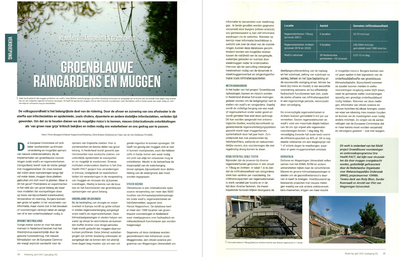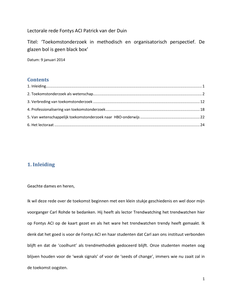Kunnen wadi’s en raingardens overal? Hoe regel je het beheer? Wat is de ecologische waarde van een wadi of raingarden? Hoe overtuig ik de gemeente? In sneltreinvaart toont Floris Boogaard (Hanzehogeschool Groningen en Deltares) honderden inspirerende voorbeelden. Hij geeft daarmee antwoord op de meest gestelde vragen over wadi’s en raingardens: het kan (bijna) overal en de woonomgeving wordt er leefbaarder van.
LINK
Nowadays, Nature-Based Solutions (NBSs) are developing as innovative multifunctional tools to maximize urban ecosystem services such as storm water preservation, reduction of runoff and flood protection, groundwater pollution prevention, biodiversity enhancement, and microclimate control. Gdańsk is one of the first Polish cities to widely introduce rain gardens (one example of an NBS) in different areas such as parks, city center, main crossroads, and car parks. They involve different technical innovations individually tailored to local architecture, including historic buildings and spaces. Gdańskie Wody, which is responsible for storm water management in the city, adopted a pioneering strategy and started the construction of the first rain garden in 2018. Currently, there are a dozen rain gardens in the city, and this organisation's policy stipulates the construction of NBSs in new housing estates without building rainwater drainage.Various types of rain gardens can be created depending on location characteristics such as geo-hydrology, as well as local conditions and needs. Furthermore, each of them might be equipped with specific technical solutions to improve the rain garden's function – for example, an oil separator or setter can be included to absorb the initial, most polluted runoff. During winter, the large amount of sodium chloride usually used to grit the roads may pose the greatest threat to biodiversity and plants. These installations have been included in a large rain garden in Gdańsk, located in the central reservation of the main streets in the city center.This work presents various technical considerations and their impact on ecosystem functions, and the urban circularity challenges provided by rain gardens operating in different technologies and surroundings. The precipitation quantity and the following infiltration rate were estimated by installing pressure transducers. Furthermore, mitigation of the urban heat island was analysed based on remote sensing images.
DOCUMENT
De volksgezondheid is het belangrijkste doel van de riolering. Door de afvoer en zuivering van ons afvalwater is de sterfte aan infectieziektes en epidemieën, zoals cholera, dysenterie en andere dodelijke infectieziekten, verleden tijd geworden. Om dat zo te houden dienen we de mogelijke risico's te kennen, nieuwe (inter)nationale ontwikkelingen als 'van groen naar grijs' kritisch te bekijken en indien nodig ons waterbeheer en ons gedrag aan te passen.
IMAGE

1e alinea column: Natuurlijk is de term digitale well being onzin. Het kan goed met je gaan op of via het internet maar well being blijft toch een analoge ervaring. Aan de andere kant, internet grijpt wel aan op well being. Daar kun je natuurlijk wel naar kijken en de vraag kun je natuurlijk wel stellen.
LINK
De VVD heeft haar kiezers bedrogen en is van politieke kleur verschoten.
DOCUMENT

Over de esthetica van Epicurus (341-370/371 v.Chr.) is niets bekend; van zijn bewaarde geschriften zijn alleen werken over de ethica bewaard gebleven. Toch is het mogelijk om vanuit de ethica Epicurus' esthetica te destilleren. Ik zal hiervoor gebruik maken van de Ratae sententiae (afgekort met RS), een verzameling van veertig leerstellingen die kort en bondig de gedachten van Epicurus weerspiegelen.
DOCUMENT

Artikel waarin kort geschetst wordt op welke wijze semantisch georiënteerd grammaticaonderwijs op het v.o. gebruikt kan worden. Beknopte achtergrond bij de workshop over semantisch grammaticaonderwijs op de 26e HSN-conferentie in Brugge.
MULTIFILE

Op groenfestival Gardenista werd vorig jaar voor het eerst een postzegeltuincompetitie gehouden. Het tuintje dat de deelnemers moesten ontwerpen mocht niet groter zijn dan tien vierkante meter. Marc Hilhorst (24), student Tuin- en Landschapsinrichting aan hogeschool Van Hall Larenstein in Velp, kreeg de meeste publieksstemmen voor zijn 'Trópicos desérticos'.
DOCUMENT

Stichting Steenbreek streeft naar vergroening van de leefomgeving in steden en dorpen. In samenwerking met deelnemende gemeenten pakken we de openbare ruimte aan om onnodige verharding te vervangen door een grote diversiteit aan groen. Hierbij is essentieel om ook bewoners te enthousiasmeren om hun eigen tuinen aan te pakken. Maar hoe zorg je ervoor dat mensen stenen uit de tuin gaan vervangen door groen? We doorlopen de stappen van gedragsverandering en kijken naar de verschillende factoren die hier invloed op hebben, aan de hand van enkele succesvolle voorbeelden van Steenbreek-acties in deelnemende gemeenten.
DOCUMENT

Introductie van het lectoraat Futures Research & Trendwatching.
DOCUMENT
